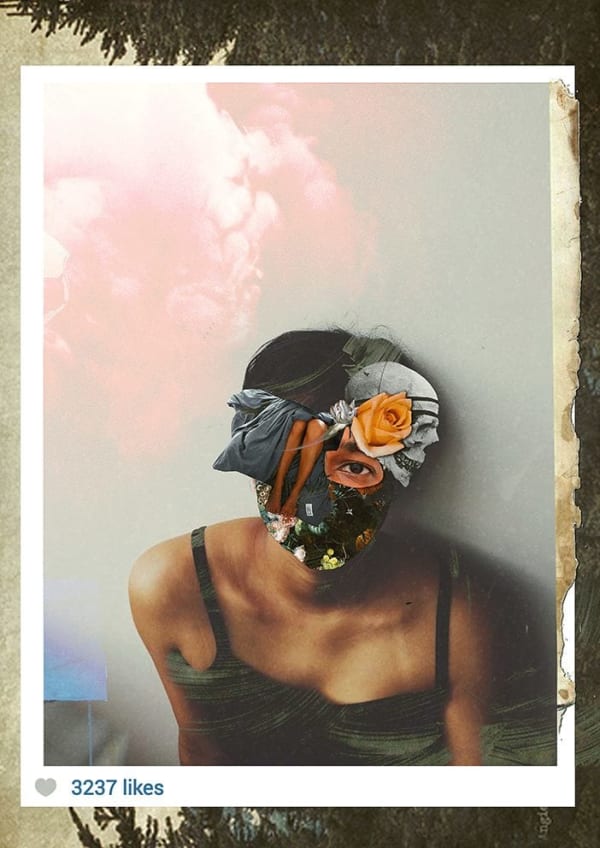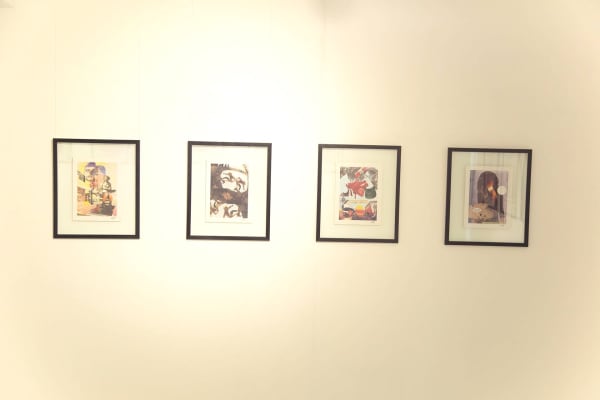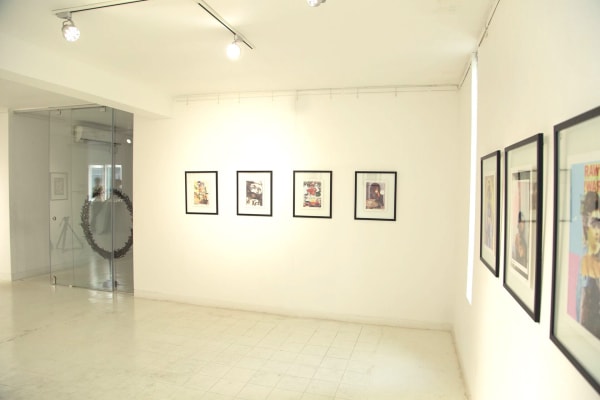The Holy Merchandise: Muvindu Binoy
The concept of baby boomers as one might be aware is the generation born during Post World War II. I am not against them, but I disapprove of their misconception of the new youth. Sometimes it is hard to explain how we might find mental freedom within a gigabyte or why we hashtag (#) every life event. It is the desire of being significant and the beauty of being able to access the limitless.
These collages expand in 20 separate movements and within the motion I intend to interpret the diagnosis of the Internet culture (from nineties youth to late millennial). It is a non-dialectic narrative with lots of computer scanning, cut-pastes and digital textures.
Every piece is consistent with a certain period of time. It is a structured interval to understand the current process of youth ideology, which is more prosthetic than organic. However, The Holy Merchandise is a synthesis. It is a pulp of many individual layers and it is purely dedi cated to the generation who was born in 1989.
Marina Abramović once asked, “Because of technology, we don’t develop telepathy. We don’t use telepathy, but use, you know, the mobile phones. Why?” My obligation is to ask, why not?
THE HOLY MERCHANDISE
MUVINDU BINOY
21 MARCH - 18 APRIL 2015
Muvindu Binoy, visual artist and videographer, presents his first solo show in the new media space of Saskia Fernando Gallery. His works are digital print on canvas presented as a series with a concept focusing on Generation Y and the Internet culture. As part of this generation, born in 1989, Binoy presents his views and observations of politics to culture. Here is an artist who communicates a subject that has not been approached to date and brings us forward into a new generation of young artists, aka the ‘Curfew Babies’.
In your concept note you discuss your work in relation to your opinion of Generation Y. How does it relate to your work Cosmic Love?
There is a different concept to each and every piece. My work is a movement, a motion, between every piece. I want to embrace the Internet culture. I want to use its templates, layouts and incorporate that in my work. Look at the 'like' count on the bottom of the image. People are so concerned about others opinions, we have such power, so this is why I want to represent that extremity in my work.
So you are still saying that we are connected?
It's pretty much like this; people are waiting for something to happen but I think it's already happened. People are waiting for someone to come and fix something. It could be God; it could be aliens. I think the connection has already happened. It's our ego that clashes after some point. We can't say that the Internet made it that way. I've quoted somewhere that we are waiting for telepathy, some wonderful miraculous connection; I think it could perhaps be the Internet. People blame the Internet for breaking that connection when I think the Internet could in fact even be that connection. I think it’s part of evolution but at the same time I'm not saying Internet is organic. I don't think anything is really organic anymore. To me all the faith in the world today is plastic. Organic is dying everyday with our generation. I think after our generation there will be nothing organic. People are now chemical in my opinion, and I'm not referring to drugs. They want something from outside. They try to find faith, love or spirituality as an answer to their search. I’m not saying this is bad; it’s all a part of us so we must embrace it.
You've titled your exhibition the Holy Merchandise, what is the meaning there?
Holy refers to each and everybody. You can see different layers and crops in each and every piece. You can relate something to the subject in each and every piece. It can be a face, a leg. That's the holy part. The connection the audience makes, makes it holy. Merchandise represents our ability to consume or sell the image.
Is that an oxymoron in a sense? You playing on the representation?
*He laughs*
With your work there are elements that connect us very clearly to what you are talking about with this Internet culture and this generation that we live in but there is also a lot of imagery in the earlier works that are connected to current events and Sri Lankan history.
It’s pretty much the representation of events at that time. Hate speech spread faster through the Internet and somehow we changed an entire government with the assistance of the Internet. It happened to Obama, it happened to Modi and it happened here as well. The power of using it is what I'm talking about, without taking the side of the Internet, what I'm saying is that there is no harm in embracing it. I can't say pop culture but perhaps more Internet reference, from the hashtag to the frames that people use. We have become used to it. I was once against it and now I like it. It's part of our culture.












